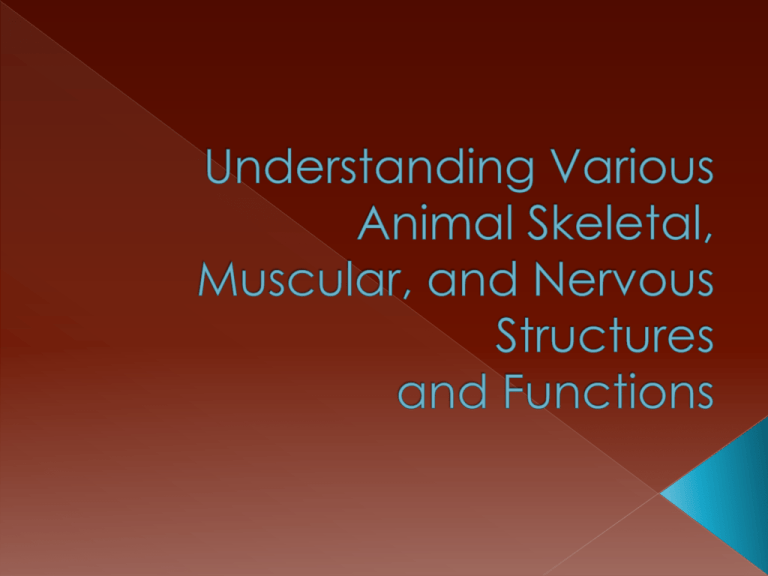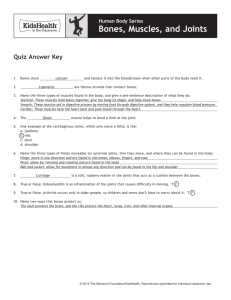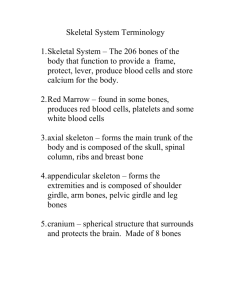PPT
advertisement

Which organ systems do you think are most necessary for the horse to create bodily movement? I can identify the structures and functions of the skeletal system. Provides a framework for the body and protects internal organs. In combination with the muscular system provides for bodily motion. Stores minerals, primarily calcium and phosphorus, and the bone marrow is the site of blood cell formation. In mammals the system consists of bones, cartilage, teeth, and joints. Composed of calcium and small amounts of other minerals. They are living structures that grow and are able of repairing themselves if damaged. Animal nutrition is vital to bone health. Bones are classified by shape as long, short, flat, and irregular. Long bones are cylindrical in shape. They are found in the limbs and typically support body weight and act as levers. Short bones are nearly equal in length and width. Short bones are found in the knee and hock and help to absorb the shock of impact. Flat bones are typically thinner than most other bones. Flat bones such as the ribs, scapula, and some bones in the skull, surround and protect vital organs. Irregular bones have a variety of shapes and sizes. Vertebrae and some bones in the skull are examples of irregular bones. A joint, or articulation, is the union of bone or cartilage. Joints are classified as fibrous, cartilaginous, or synovial. The classification of joints is based on joint structure and movability. Include those united by connective tissue or fused bone. Fibrous joints typically do not permit any type of movement and include the bones of the skull. Those that include a pad of cartilage that divide and cushion vertebrae and allow only slight movement. Freely movable joints in which the bones are held together at the joints by ligaments. Types of synovial joints include ball-and-socket, hinge, pivot, and gliding.






